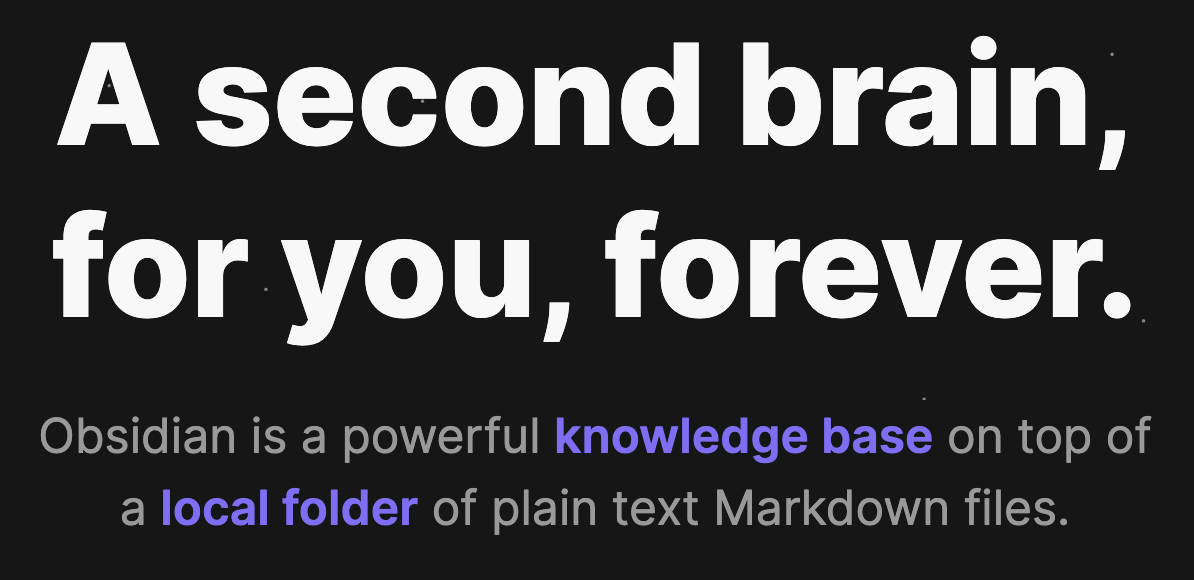Got myself a new brain
Every week I write a newsletter. What I write about is usually informed by notes I've kept for myself: Things I've read that interest me, often about artists and process and such. The problem isn't what to write about; it's how to make sense of my notes. I take lots of notes, but I store them in inconsistent ways.
- There are hundreds of notes in Ulysses, most of them fodder for the newsletter or blog posts like this one; a few of them are notes for my future self, on the subject of necessary revisions to a novel-in-progress
- There are thousands of notes in Evernote, everything from dashed-off ideas for stories I'll probably never write to editorial notes about projects I finished years ago
- My email inbox is stuffed with messages from myself, notes that are incomplete thoughts I'll process and make complete at a later date
- A bulletin board on my study wall is blanketed with quotes I've collected recently
- My actual desk usually sports a few Post-its; there are more yellow notes stuck around the edges of my computer's display
- I have newsletter drafts and ideas lodged in iA Writer
- I keep long-term notes with recurring utility in the Mac's Stickies app, and call them up when I'm doing tax prep or other such things
- ...and so on
Recently I found myself unable to locate notes I knew I'd taken, and therefore unable to write the thing I wanted to write, which would draw connections between seemingly unrelated thoughts and make me seem pretty darned smart. I didn't write the thing. But I did start wondering if there was a better system for gathering my notes.
Last year a coworker mentioned an app called Obsidian. I visited its web site, where it seemed to have a very inflated view of itself:

But it was free, and promised not only organization, but connection between notes, so what could it hurt to try?
For two weeks now I've been moving notes from other locations into Obsidian, tidying them up, citing their sources, adding my own observations, etc. So far I've moved just under 1,200 notes into the app. Obsidian has a graph view; let's see what it looks like currently:

This is what sold me on the app.
Well, actually, no, not exactly. It wasn't the total graph view that got me. It was the local one.
See, each time I view a note it shows me an additional bit of context: Where the note sits in relation to other notes. A localized snippet of the larger graph.
For example, I have a note called Originality lies on the far side of unoriginality, which summarizes the Helsinki Bus Station theory. That note has an interesting chain of custody: I first read about the theory via Austin Kleon's blog post, which led me to Oliver Burkeman's Guardian essay, which led me to Arno Minkkinen's lecture (he originated the concept).
In the local graph for this note (shown as the large blue node) you can see some of those mapped relationships—Kleon and Burkeman and Minkkinen all show up here—as well as some peripheral ones:

But I can even take it a step further, and increase the depth of that local graph to show neighboring notes, or notes that are one link removed from this set of immediate relationships:

And just like that, I'm able to start linking ideas in new ways, in ways I might not have come to on my own. The Helsinki Bus Station theory—which says, more or less, that you have to stick with an idea long enough for it to surf past familiarity and into originality—is thematically linked to other notes I've kept, such as When to disconnect and when to share or Give yourself permission to be creative or Some self-deception is necessary to the creation of art. A note's meaning expands as a result of these connections, which makes my writing—because all of these notes lead, or should lead, to something I'll write someday—a little deeper and more interesting.
Here's what that note about the Helsinki Bus Station theory looks like:

Each of those double-bracketed things is another note, which is what informs the graph view in Obsidian.
As I move a note from another source into Obsidian, I make some of these connections because I know that they already exist. Others I discover, and then create formal connections to support. The 1,200-ish notes I've added to the app represent, oh, maybe 10-20% of my total notes. I can only imagine what the graph and all of the relationships will look like when I eventually finish.
After a couple weeks of use, I have no beef with Obsidian referring to itself as a second brain. It's even affected the way I think in the real world, ever so slightly: By doing the work of linking my thoughts in the app, I've apparently been subtly training my brain to do the same thing when I'm having a conversation, or thinking about some new thing I've just consumed. Mention poetry to me, and I might say, "Did you know Mary Ruefle doesn't own a computer? She does all her writing longhand," and then you'd be like, "People still write longhand?" and I'd be like, "Oh, yes," and tell you about how Alexander Chee or Joe Hill write novels by hand, or how Lynda Barry writes using a big sloppy paintbrush, or...
You'd walk away from the conversation, probably, but I'd be capable of going on and on and on for, who knows, probably weeks.

Member discussion